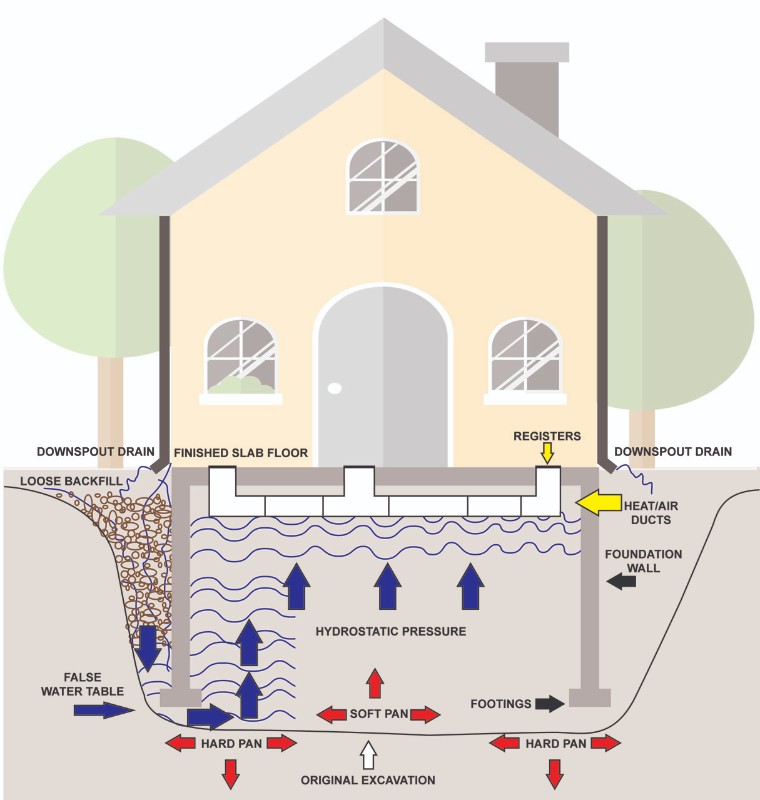
Is a False Water Table Flooding Your Underground Ducts?
If you’ve found water in your underground air ducts, your first thought is probably: How did it get there?
The answer isn’t always simple. Some homes are built on naturally high water tables, where groundwater sits close to the surface year-round. Others may sit on what’s called a false water table—a temporary buildup of water trapped above the natural water table, often caused by poor soil drainage or an impermeable layer of clay or debris.
Here’s how it happens:
Some homes are built on naturally high water tables, where groundwater sits close to the surface. Others may sit on a false water table, a temporary buildup of water above the true water table, often caused by poorly draining soil or an impermeable layer trapping water.
When a home is excavated, the builder starts by digging a large, saucer-shaped hole in compact, undisturbed soil. After the foundation is poured, it’s backfilled with loose, disturbed soil that allows water to seep easily around and under the home. With nowhere to drain, this water collects and rises, creating hydrostatic pressure that forces water into underground areas, including air ducts. It typically enters through cracks in duct seams, joints, or the plenum.
Warning Signs of a False Water Table
- Persistent indoor humidity
- Condensation on windows
- Gurgling noises when your HVAC system runs
- Reduced airflow
- A musty or damp smell in your home
If any of these symptoms sound familiar, don’t wait for the damage to spread. It’s time to schedule a professional underground duct inspection.
What to Expect From an Underground Air Duct Inspection
- Camera Inspection: A high-resolution camera is inserted through the ducts to assess their condition.
- Damage Documentation: All damage, debris, and signs of water intrusion are documented during the inspection.
- Detailed Report: You’ll receive a full inspection report along with a copy of the video footage.
- Clear Solutions: If issues are found, we’ll provide clear, no-pressure solutions—including duct restoration options if needed.
Water in your ductwork isn’t just a nuisance—it’s a health and safety concern. If you’re in the Chicagoland area and suspect moisture in your underground ducts, Trenchless Innovations has the experience, equipment, and solutions to help you breathe easier.
Schedule your underground duct inspection today or call us 708-758-5070 to learn more. Let’s get your home back to dry, clean, and comfortable—starting beneath the surface.
